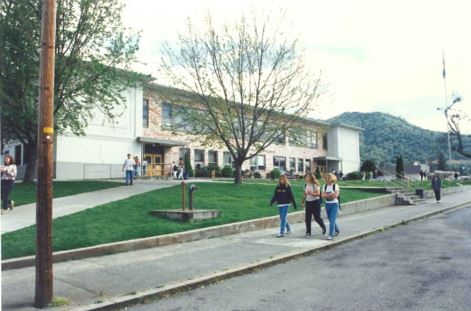
Part 1 of a 3-Part Series: 1895-1949
Grants Pass High School has so much history that most students probably don’t know about.
Grants Pass High School has been open for over 100 years. The school opened in 1885 and the first class of four students graduated in 1888.
Over the years there have been many remodels and changes, but a school is not just the classrooms and the homework assigned in them. A school is the pride and joy the students have in their school.
According to the 1892-93 Annual Report of the Grants Pass Public Schools, 616 people were in the district between the ages of 4 and 20. At the time the average school attendance was 344 and there were eight teachers. There was one teacher per grade for the first through sixth graders. The seventh and eighth graders had a teacher and the high school teacher was the principal and served on the Board of Education.
In the first few years of the high school there were very limited subjects students were able to take. Some of them included etymology, philosophy, civil government, bookkeeping and Latin. In 1907 the school yearbook, The Toka, began publication. The yearbook was named after the commercial Tokay grape vineyards. The Toka talked about the plans for a new high school in June of 1910 and in February of 1911 the students had moved into the new building.
In 1918 and 1919 several young men and teachers departed Grants Pass for war-related duties during World War I. In 1922 the student newspaper, The Scroll, began publication. In 1925 Grants Pass High School was extended and remodeled, there were two wings added at the East and West ends of the building. Construction on a new building began in the late thirties and the new school was occupied in the 1939-40 school year. The building remained part of the high school until 1998.
In the summer of 1948 there was another building constructed and the 1910 portion of the school was almost completely removed. The top floors of the 1925 wings were removed and the new construction joined the remaining wings.
A new grandstand was also built on the east side of the football field in the front of the school. In the fall of 1948, the construction was not finished, and some classes used the building anyway. Other classes met two blocks west in the old Lincoln School.
The winter of 1948-49 was the winter the Rogue River froze over near the Caveman Bridge. Doors, if there were any hung, didn’t have knobs. Jackets were worn all day in attempt to stay warm.


